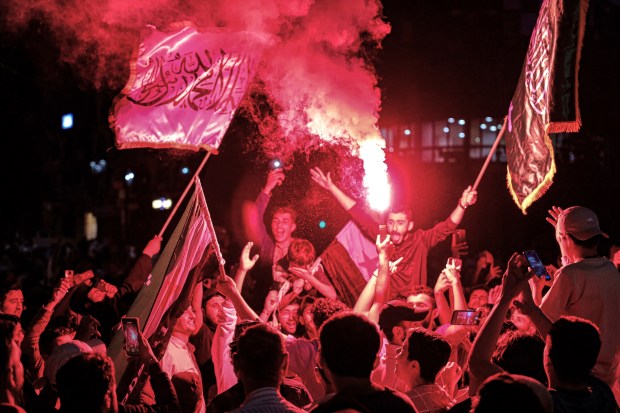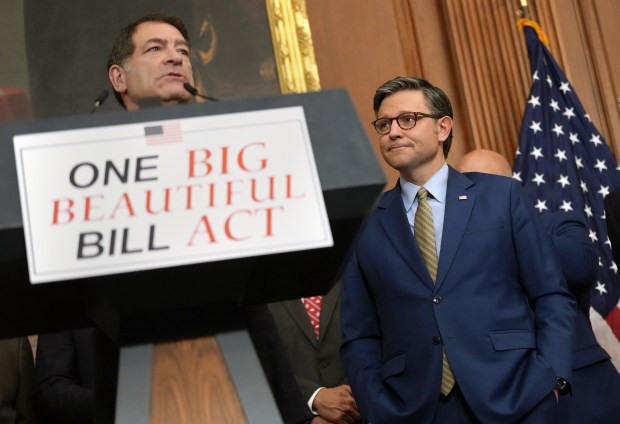For close to 30 years, gun buybacks have been a high-profile part of the Chicago Police Department’s attempts to stem the tide of violent crime — especially in under-resourced communities on Chicago’s South and West sides.
More than 30,000 weapons have been turned in citywide, usually in exchange for a $100 gift card. Nationwide, the federal government announced an allocation of $15 million in 1999 to support gun buybacks in 85 communities.
As a symbolic gesture and as part of a more integrated approach to improving public safety, buybacks can do some good. But they need to be effectively run — and that includes ensuring that surrendered guns don’t wind up back on the streets.
All too often, that’s not the case. According to a 2023 New York Times report, there is a mini-industry of companies that police departments hire to dispose of the guns. Some melt or shred them, but some of the vendors destroy only the part of each gun that contains a serial number. These companies then bundle and sell the rest of the parts in an aftermarket where the pieces are used to assemble new weapons — many of them untraceable “ghost guns.”
That wasn’t part of anybody’s gun-buyback master plan.
Guns also sometimes just disappear after they’re turned in, as the Illinois Answers Project, part of my organization the Better Government Association, reported last month. Working in partnership with the Sun-Times, Illinois Answers found that a Glock pistol wound up in the possession of a 16-year-old who later was arrested by Chicago police — roughly a year after the Glock was surrendered at a buyback in late 2023 at St. Sabina church.
During that year, the .45-caliber pistol, which went missing from the Gresham District police station, was used in at least three crimes, Illinois Answers and the Sun-Times found. In one of them, a South Side woman was shot in the leg.
The Chicago Police Department’s response has been casual at best. The sergeant in charge when the gun disappeared was suspended from active duty — for a single day. Chicago police Superintendent Larry Snelling, at a news conference called to discuss something else, said the case of the missing Glock would be investigated but has said nothing since. A department spokesman said steps have been taken to prevent more surrendered guns from disappearing but did not provide details.
CPD owes a full report to the city about what those remedial measures are. And we need to know, too, if the Glock’s disappearance was part of a larger problem.
After all, guns have value on the streets. If the CPD chain of custody is not secure between buyback and destruction, there is plenty of incentive for someone to snatch a surrendered gun and sell it for profit. Illinois Answers previously reported one other case in which a buyback gun reemerged. CPD needs to tell the public whether there have been more such cases.
The idea of buybacks is to remove and destroy guns so they can do no more harm. The events garner media attention, with their photo-ready displays of firearms taken out of circulation.
Police believe many surrenders are made by people who have no license to carry the guns or might have obtained them illegally. Usually, they’re allowed to surrender the guns anonymously. And whether people turn in the guns out of a sense of public duty or for a $100 reward doesn’t matter — so long as the guns are gone for good.
But it’s important to be real about an undeniable truth: Academic studies over years have found no way to prove that gun buybacks in U.S. cities are effective in reducing violence. The Rand Corp. surveyed the academic literature and found no proof that buybacks lead to fewer shootings, according to a 2023 report.
The number of guns recovered at buybacks pales in comparison with the flood of firearms that makes the supply of guns seem bottomless. In fact, most of those who turned in guns at buybacks studied by one researcher had another gun back at home, available for use. A separate paper found large numbers of surrendered guns either were not functional or were far older than the models typically used in street crimes.
Chicago’s mayors and police have been fairly realistic about the limitations. They have used buybacks mainly as a minor tactic in citywide violence-reduction strategies. When used this way — as mayors have done since the first buyback in 2006 — buybacks can help, as a communication tool if little else. Serving as a public relations tool, a way of building awareness and community support for other, more effective public safety measures, they can do some good.
For nearly two decades now, St. Sabina in Chicago’s Auburn Gresham neighborhood has been a key partner in the city’s gun buyback initiatives. More than 5,000 guns have been turned in at St. Sabina, Illinois Answers and the Sun-Times reported. That’s more than 15% of the city’s total. The Rev. Michael Pfleger of St. Sabina, who has made crime reduction a signature of his decadeslong tenure at his parish, has used the buybacks for messaging, too. Over the years, he has paid for billboards and staged marches through violence-prone neighborhoods. For Pfleger and his partners in crime reduction, as for the city, the buybacks fit into a strategy of opening a conversation about addressing violent crime, informing people about how they can be part of the solution.
Buybacks alone won’t do much good. Year by year, more guns flow into Chicago from Indiana, or the suburban towns of Riverdale and Lyons, than are recovered in gun buybacks, according to federal data and news reports. Straw purchasers, in Illinois and Indiana, buy weapons, then flip them to people who cannot legally own guns — people more likely to commit gun crimes.
Street guns will always be with us, no matter how ambitious the buyback effort, and letting a gun go missing — as the Chicago police have done — risks undermining confidence in buybacks, dulling their usefulness as a part of efforts that include community policing, investment in neighborhoods, the building of support for community violence intervention and more.
Throwing the whole weight of government and community toward violence reduction is Chicago’s best bet in efforts to reduce the frequency and tragic costs of gun violence. For gun buybacks to contribute meaningfully, CPD needs to build confidence that surrendered guns will stay off the streets for good.
David Greising is president and CEO of the Better Government Association.
Submit a letter, of no more than 400 words, to the editor here or email letters@chicagotribune.com.




